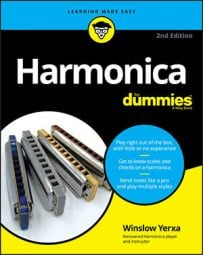Repairing your harmonica can be tough. Keeping track of tiny parts in a grassy, wind-blown field in the middle of the night while trying to pry apart a small, delicate object with twigs, pebbles, and bits of scrap metal probably isn’t your idea of fun. It’s not mine, either, so here are some simple practices that will save you time and aggravation when you work on your harps:
Use reed-safe tools. Tools that are both sharp and hard are good for tuning reeds or removing burrs and obstructions. The rest of the time, however, they risk making unwanted cuts and scratches to reeds. Most of your tools should either be dull or made of something no harder than the brass reeds. It’s a good idea to use tools made of brass, plastic, or wood.
Keep track of tiny parts. Those tiny bolts, nuts, and nails that come out of a harmonica can easily bounce away into deep carpet. To avoid losing the parts, always disassemble harps over a table, work over a smooth, bright surface, and place fasteners and other small parts in a shallow dish (or jar lid) for safekeeping.
Make small changes and test frequently. When you’re removing metal from a reed or changing a reed’s shape, you can easily go too far. So be sure to make changes gradually and test the results frequently. Working slowly may seem like a time-consuming chore, but it can prevent mishaps and save you time (and perhaps cash) in the long run.
Plink the reed. When you make any change to a reed, you should plink it. To do this, lift the tip of the reed a few millimeters above the reedplate and then release the reed and let it vibrate. Plinking allows the reed to settle in place, and the resulting sound tells you whether the reed still vibrates freely.
Test the results of tuning or adjustments. All the parts of a harmonica affect how individual reeds play. To test the results of tuning or adjusting a reed, play the note with the harp assembled. You don’t need to bolt or nail it together completely. Just assemble the reedplates with the comb and the covers. Hold them together and then test the reed by playing.

